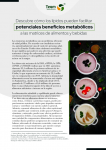Kellogg teams up with Monsanto to reduce trans fats
low linolenic soybean oil in an effort to reduce or eliminate trans
fatty acids while also minimizing the saturated fat content of the
products, the company announced last week.
Kellogg is the first major food manufacturer to announce its use of Monsanto's Vistive low-lin soybeans, though Monsanto said "several other companies are currently also working with Vistive," but could not reveal which ones.
The move is part of an industry drive to reduce trans fats in food formulations ahead of new legislation in the US that will require food manufacturers to label the trans fat content of their products as from January 1 2006. The new labeling is designed to give consumers the choice to avoid trans fatty acids (TFAs) after a body of scientific evidence has linked these to increased risk of heart disease because they lower HDL (good) cholesterol while raising LDL (bad) cholesterol.
Ten years in development, the Vistive low-lin soybeans - produced through conventional breeding methods - contain less than 3 per cent linolenic acid, compared to 8 per cent for traditional soybeans.
"Because soybeans with less linolenic acid reduce or eliminate the need for partial hydrogenation, trans fats in processed soybean oil can be reduced or eliminated," said the biotech firm on the introduction of its new bean last year.
Kellogg said it anticipates introducing some products reformulated with Vistive soyoil in early 2006, though could not reveal specific brands affected.
"What I can tell you today is that we expect to introduce in 2006 a variety of low lin products that contain zero grams of trans fats in accordance with the Food and Drug Administration (FDA) regulations," said the company's director of communications Jill Saletta.
She added that the company intends to introduce some crackers in the first quarter next year, launching more varieties later in the year. In the second quarter the company will introduce reformulations of some of its "wholesome snacks," and towards the end of the year, assuming available low-linolenic soyoil supply, Kellogg also plans to launch some frozen products.
"Our goal is to make use of the most innovative ingredients possible and to encourage the accelerated production and adoption of low-lin oils so the public will benefit from this breakthrough technology," said the company's president and chief operating officer David Mackay.
While Kellogg may well be paving the way for other manufacturers to follow suit, supplies of low-lin soybean oil are currently significantly low, according to Mackay.
In order to meet future demand, soybean farms will need to transform their production methods, and food manufacturers will need to signal their intention to use low-lin soybean varieties, said the company.
According to the United Soybean Board, in 2005, farmers planted about 200,000 acres of low linolenic soybean varieties. Nearly a million acres are expected to be planted in 2006 to meet the anticipated demand for low-lin soybean oil and significantly more will be necessary to replace the more than 5 billion pounds of partially hydrogenated soybean oil used annually in the United States.
Currently, soybean oil accounts for 80 percent, or 17.5 billion pounds, of the oil consumed in the U.S. and is the most widely used oil in food production.
As a result of the market shortage for low-linolenic soyoil, Kellogg said it is limiting its low-lin product reformulations to the US market, and has no plans in the near future to expand into the global market with these products.
For the same reason, the company said it will also be working with the Bunge/DuPont Biotech Alliance, another producer of low linolenic soybeans. In 2007, Kellogg will use the company's Nutrium low-lin soybean oil in addition to Monsanto's Vistive varieties.
Kellogg also said it is "calling for better cooperation among farmers, seed producers, and food manufacturers to create a reliable supply and efficient delivery of soybean varieties with a low linolenic acid profile."
Monsanto's low-linolenic soybeans are the first in the company's Vistive line, with three new bean varieties due to hit the market by 2013. Last week the company announced it is to develop a mid-oleic bean by 2009, designed to offer longer shelf life to the low-lin soyoil.
By 2012 the company said it plans to develop a bean enhanced with Omega 3, and by 2013 it will introduce a low saturates bean, which it claims will provide "a heart-healthy combination of lower saturated fats, lower trans fats and improve stability."















